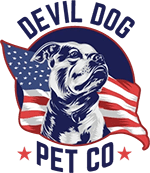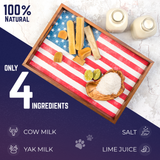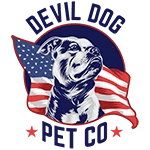Key Takeaways
- Emergencies can happen unexpectedly, leaving your dog alone at home.
- A "my dog is home alone card" helps manage emergency situations involving your pet.
- This card is a simple tool that can be carried conveniently in your wallet.
- Having the card ensures that others are informed about your dog's status during a crisis.
Table of Contents
- What Is a 'My Dog Is Home Alone' Card and Why Does Every Responsible Owner Need One?
- Essential Features: What Information Must Your Card Include?
- When and How to Use a 'My Dog Is Home Alone' Card for Maximum Impact
- Step-by-Step Guide: Creating or Upgrading Your Own Dog Emergency Card
- Card or Sticker? Comparing "Home Alone" Cards to Other Emergency Alerts
- Troubleshooting & Advanced Tactics: Problems, Solutions, and Real-World Scenarios
- Where to Buy, Print, or Find Templates: Resource Guide for Responsible Owners
- Taking Action: Veteran-Rooted Commitment to Extreme Dog Leadership
My Dog Is Home Alone Card: Essential Guide for Owners
Every responsible dog owner faces the same harsh reality: emergencies don't wait for convenient timing. When you're unconscious in a hospital bed or trapped in a vehicle after an accident, your dog sits at home wondering where you are. A my dog is home alone card transforms this nightmare scenario into a manageable crisis with one simple tool carried in your wallet.
This wallet-sized lifeline ensures first responders, hospital staff, or good samaritans know there's a dog depending on you at home. Without it, your four-legged family member could wait days before anyone realizes they need help. With it, rescue happens within hours. Long-lasting dog chews can help keep your pet occupied and calm while waiting for help to arrive.
Insurance data shows 1 in 8 pet owners experience an emergency making them unreachable for over 12 hours during their dog's lifetime. Motor vehicle accidents, sudden hospitalizations, work injuries, and family crises happen without warning. Your my dog is home alone card bridges the gap between your emergency and your dog's care, ensuring someone steps in when you can't. If your dog is in the 20-45 lbs range, explore these recommended products for medium dogs to support their well-being during stressful times.
What Is a 'My Dog Is Home Alone' Card and Why Does Every Responsible Owner Need One?
A "my dog is home alone card" is a wallet-sized emergency notification that alerts first responders, medical staff, or witnesses that you have a dog at home who needs immediate care if you're incapacitated, hospitalized, or unreachable.
Picture this: you're in a car accident and rushed to the ER unconscious. EMTs find your wallet and discover a card stating "EMERGENCY: My dog Buddy is home alone at 123 Oak Street. Contact Sarah at 555-0123 for immediate pet care." Within two hours, your emergency contact is feeding and walking your dog instead of him waiting three days for your return.
Insurance data shows 1 in 8 pet owners experience an emergency making them unreachable for over 12 hours during their dog's lifetime. Motor vehicle accidents, sudden hospitalizations, work injuries, and family crises happen without warning. Your my dog is home alone card bridges the gap between your emergency and your dog's care, ensuring someone steps in when you can't.
Essential Features: What Information Must Your Card Include?

Must-Have Details For Fast Action
Your emergency card succeeds or fails based on the information it contains. Include your full name, home address, and primary phone number so responders can verify identity and location. List at least two emergency contacts with clear relationships, "Sister: Maria 555-0234" works better than just "Maria." Add your dog's name and any critical health information like medications, allergies, or behavioral warnings.
| Critical Field | Example | Why Essential |
|---|---|---|
| Owner Name & Address | John Smith, 456 Pine Ave | Verifies identity, locates pet |
| Emergency Contacts (2+) | Wife: Jane 555-0123 Brother: Mike 555-0456 |
Ensures someone responds |
| Pet Details | Dog: Rex, needs heart medication | Proper care instructions |
| Access Information | Spare key with neighbor at #458 | Safe home entry |
Safety & Privacy Balance
Never broadcast alarm codes or hide spare keys in obvious locations on your card. Instead, reference trusted contacts who hold access information: "Contact Jane for entry details" protects your security while ensuring pet access. Use first names and partial addresses if privacy concerns outweigh emergency speed, "J. Smith, Pine Avenue" still provides enough information for action.
When and How to Use a 'My Dog Is Home Alone' Card for Maximum Impact
Carry your my dog is home alone card everywhere, wallet, purse, gym bag, car glove compartment. Add a bright "PET AT HOME!" sticker inside your wallet's main compartment where EMTs check for medical information. This visual marker draws immediate attention to your card during high-stress emergency situations when details get overlooked.
Update your card after every move, phone change, or shift in pet care routine. Set a quarterly reminder in your digital calendar to review all information for accuracy. Keep a digital photo of your current card in your phone's emergency contacts section as backup, hospital staff often check phones when wallets are damaged or lost. For more tips on helping your dog adjust to changes, read how to make your new dog feel at home.
Real-world scenario: After a bicycle accident, paramedics find an unconscious rider with a damaged phone but intact wallet. The emergency card leads them to contact the rider's sister, who rushes to care for two dogs that would otherwise wait 18 hours until the rider regained consciousness. The card transformed potential pet trauma into immediate relief.
Step-by-Step Guide: Creating or Upgrading Your Own Dog Emergency Card
DIY Printable Cards
Create a professional emergency card in under 10 minutes using free online templates. Search "pet emergency wallet card template" and select designs with clear text fields and bold formatting. Print on heavy cardstock using your home printer, then laminate for water and sweat resistance. Fill out information with a permanent marker using block letters, cursive becomes unreadable under emergency lighting.
Materials needed: cardstock paper, laminating pouches, permanent marker, and access to a printer. Total cost stays under $5 for a pack of cards that last years. Test your pen choice on a corner first, some laminated surfaces smear with certain ink types. If you have a puppy, consider a puppy antler chew to help keep them calm during stressful events.
Buying Pre-made Cards Vs. Printables
Pre-made cards offer superior durability and professional appearance but cost $5-15 per card while printables run under $1. Professional cards typically include water-resistant materials, clear fonts, and emergency stickers. However, customization options remain limited. If your dog prefers a different type of chew, try Himalayan dog yak chews for a long-lasting treat during emergencies.
| Feature | DIY Printables | Pre-made Cards |
|---|---|---|
| Cost per card | $0.50-1.00 | $5-15 |
| Durability | Good with lamination | Professional grade |
| Customization | Complete control | Limited fields |
| Time to complete | 10 minutes | 3-7 days shipping |
| Update flexibility | Instant reprinting | New purchase required |
Test pen compatibility before writing on any surface. Permanent markers work best on laminated cards, while gel pens suit uncoated cardstock.
Card or Sticker? Comparing "Home Alone" Cards to Other Emergency Alerts

Multiple emergency notification systems protect your dog during different crisis scenarios. Each method serves distinct situations where you cannot communicate your pet's needs directly.
A comprehensive emergency plan combines portable wallet cards with visible home alerts. The my dog is home alone card excels during personal emergencies away from home, while window stickers alert first responders arriving at your property. For more on canine behavior and stress, see why does my dog do that.
| Alert Type | Best For | Response Time | Privacy Level | Update Ease |
|---|---|---|---|---|
| Wallet Card | Personal emergencies | Immediate | High | Easy reprint |
| Window Sticker | Home fires/break-ins | Fast | Public display | Replace entire sticker |
| Collar Tag | Lost dog recovery | Moderate | Medium | Order new tag |
| Microchip | Veterinary ID | Slow | Database protected | Registry update |
Layer these systems for complete coverage. Microchips identify ownership at veterinary clinics but provide no immediate home-alone notification. Collar tags help during off-site emergencies but offer limited space for emergency contact details.
Troubleshooting & Advanced Tactics: Problems, Solutions, and Real-World Scenarios
Card damage or loss requires immediate replacement protocols. Store digital photos of your completed my dog is home alone card in cloud storage for instant reprinting. Keep blank templates readily available for emergency updates when contact information changes. For dogs who need extra chewing power, extra thick bully sticks can help reduce anxiety during stressful times.
Emergency Contact Failure Protocol: List three contacts minimum, family member, neighbor, and professional pet sitter. Include your veterinarian's after-hours number as final backup when personal contacts prove unreachable.
QR codes enhance information transfer speed during crisis situations. Generate free QR codes linking to digital emergency profiles containing detailed care instructions, veterinary records, and multiple contact options. Position QR codes prominently on card corners for smartphone scanning.
Privacy concerns demand strategic information sharing. Never display door codes or detailed security information on cards. Instead, reference "Contact Sarah at 555-0123 for property access" to maintain security while enabling emergency response.
Where to Buy, Print, or Find Templates: Resource Guide for Responsible Owners
Reputable online retailers offer professionally designed emergency cards with proven field-testing. Veteran-owned businesses often provide superior customer service and understand emergency preparedness principles. Check customer reviews for evidence of successful real-world usage and first responder feedback. For more information on separation anxiety and how to help your dog cope, visit this ASPCA resource on separation anxiety.
Free printable templates from established pet organizations deliver reliable formatting and essential field inclusion. The ASPCA, local animal control agencies, and veterinary associations maintain updated template libraries. Download multiple versions to compare layout effectiveness before printing. If you want to learn more about leaving your new dog home alone, check out this guide from Hill's Pet.
Quality indicators include readable fonts at wallet size, water-resistant coating options, and clear field organization. Avoid templates with decorative elements that reduce information space or compromise emergency readability. Professional emergency cards should prioritize function over aesthetics.
Taking Action: Veteran-Rooted Commitment to Extreme Dog Leadership

Responsible dog leadership means preparing for every scenario where your dog depends on others for survival. A properly executed my dog is home alone card transforms potential disaster into manageable crisis response. For those who want to show their commitment, the Official DDPC Snapback Hat is a great way to represent responsible ownership.
Devil Dog Pet Co. champions owners who take extreme ownership of their dog's safety and well-being. Create your emergency card today, test your contact network, and lead with the confidence that comes from thorough preparation. Your dog's life may depend on it.
Frequently Asked Questions
What is a 'My Dog Is Home Alone' card and how does it help in emergency situations?
A 'My Dog Is Home Alone' card is a wallet-sized alert that informs first responders or bystanders you have a dog at home needing care if you're incapacitated. It bridges the gap during emergencies by ensuring someone knows to check on and care for your dog quickly, preventing prolonged neglect.
What essential information should I include on my dog's emergency card to ensure quick assistance?
Include your dog's location, your emergency contact's name and phone number, your dog's size or special needs, and any relevant access instructions. Clear, concise details help responders act fast and keep your dog safe.
When and how should I use the 'My Dog Is Home Alone' card for maximum effectiveness during a crisis?
Carry the card in your wallet at all times so first responders find it immediately during an emergency. Use it whenever you leave your dog alone, especially if you have health risks or live alone, to guarantee prompt care if you become unreachable.
How does a 'My Dog Is Home Alone' card compare to other emergency alert methods like stickers or digital notifications?
Cards are portable, visible to first responders, and don’t rely on technology or home access like digital alerts. Stickers on doors or windows can be missed or ignored, while cards ensure anyone with your wallet knows your dog’s status instantly.






